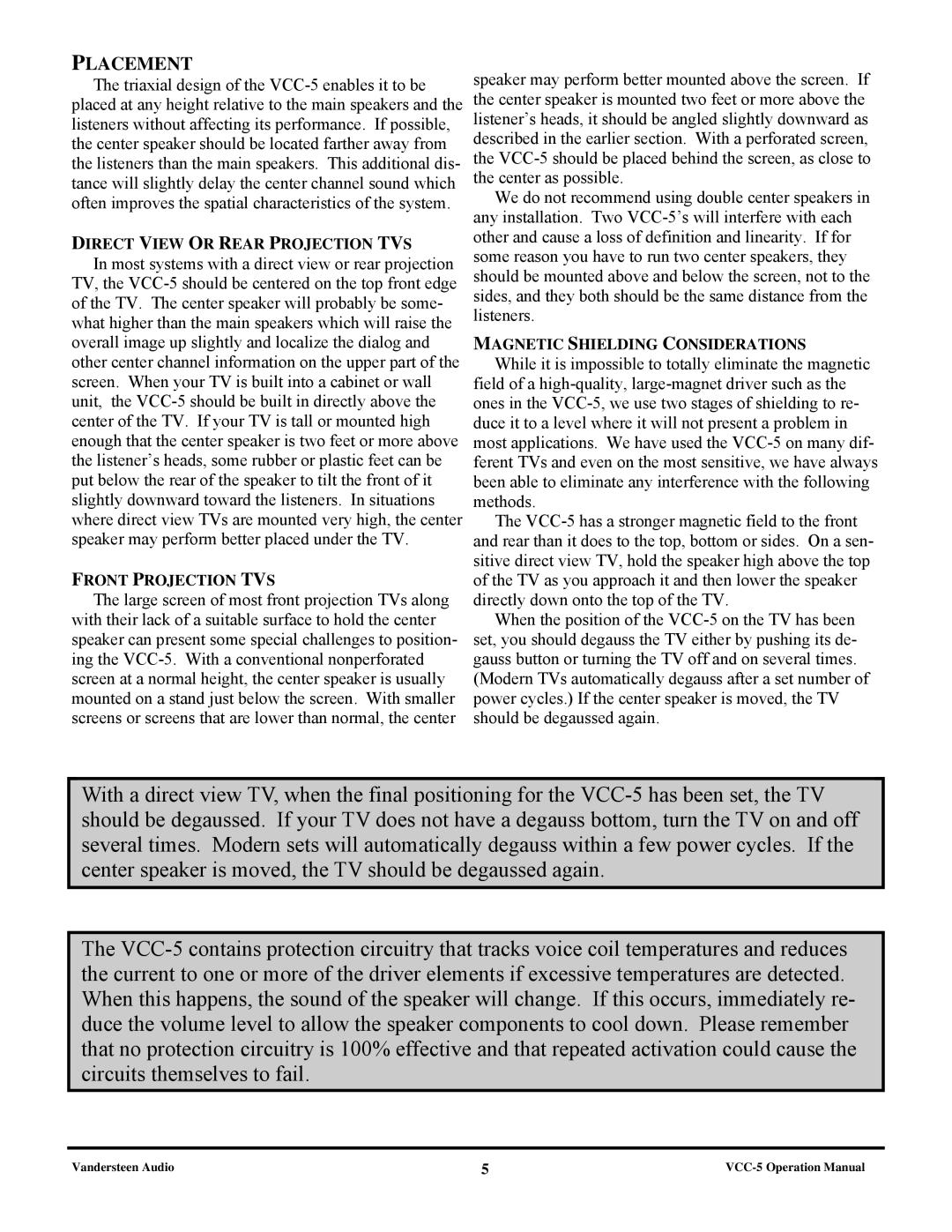PLACEMENT
The triaxial design of the VCC-5 enables it to be placed at any height relative to the main speakers and the listeners without affecting its performance. If possible, the center speaker should be located farther away from the listeners than the main speakers. This additional dis- tance will slightly delay the center channel sound which often improves the spatial characteristics of the system.
DIRECT VIEW OR REAR PROJECTION TVS
In most systems with a direct view or rear projection TV, the VCC-5 should be centered on the top front edge of the TV. The center speaker will probably be some- what higher than the main speakers which will raise the overall image up slightly and localize the dialog and other center channel information on the upper part of the screen. When your TV is built into a cabinet or wall unit, the VCC-5 should be built in directly above the center of the TV. If your TV is tall or mounted high enough that the center speaker is two feet or more above the listener’s heads, some rubber or plastic feet can be put below the rear of the speaker to tilt the front of it slightly downward toward the listeners. In situations where direct view TVs are mounted very high, the center speaker may perform better placed under the TV.
FRONT PROJECTION TVS
The large screen of most front projection TVs along with their lack of a suitable surface to hold the center speaker can present some special challenges to position- ing the VCC-5. With a conventional nonperforated screen at a normal height, the center speaker is usually mounted on a stand just below the screen. With smaller screens or screens that are lower than normal, the center
speaker may perform better mounted above the screen. If the center speaker is mounted two feet or more above the listener’s heads, it should be angled slightly downward as described in the earlier section. With a perforated screen, the VCC-5 should be placed behind the screen, as close to the center as possible.
We do not recommend using double center speakers in any installation. Two VCC-5’s will interfere with each other and cause a loss of definition and linearity. If for some reason you have to run two center speakers, they should be mounted above and below the screen, not to the sides, and they both should be the same distance from the listeners.
MAGNETIC SHIELDING CONSIDERATIONS
While it is impossible to totally eliminate the magnetic field of a high-quality, large-magnet driver such as the ones in the VCC-5, we use two stages of shielding to re- duce it to a level where it will not present a problem in most applications. We have used the VCC-5 on many dif- ferent TVs and even on the most sensitive, we have always been able to eliminate any interference with the following methods.
The VCC-5 has a stronger magnetic field to the front and rear than it does to the top, bottom or sides. On a sen- sitive direct view TV, hold the speaker high above the top of the TV as you approach it and then lower the speaker directly down onto the top of the TV.
When the position of the VCC-5 on the TV has been set, you should degauss the TV either by pushing its de- gauss button or turning the TV off and on several times.
(Modern TVs automatically degauss after a set number of power cycles.) If the center speaker is moved, the TV should be degaussed again.

